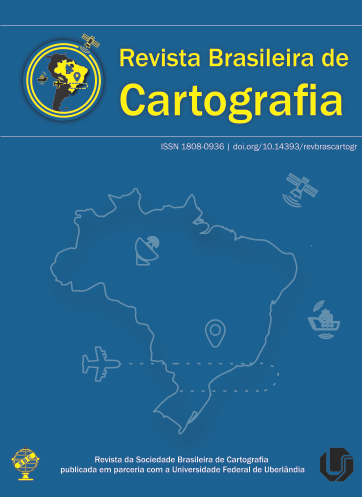Object-based Classification of Vegetation Cover Typologies in Wetland, Integrating Optical Images and SAR
Main Article Content
Abstract
Accurately mapping the boundaries of wetlands and patterns of vegetation cover is an essential step for rapid assessment and management of wetlands. The Object-Based Image Analysis (OBIA) as from machine learning and fusion of optical and radar data has advantages over other techniques for mapping vegetation cover in wetlands ecosystems. This study aims to classify vegetation cover typologies in wetlands, integrating optical and SAR images from the Sentinel-1 and 2A satellites and the Random Forest algorithm in OBIA classification, using Banhado Grande, located in the Rio Grande do Sul as a case study. As a result, the VH and VV polarizations of Sentinel-1 obtained the highest relevance in the classification (18.6%). Among the optical bands, the greatest relevance occurred for the Red Edge and Medium Infrared bands. From the optical attributes, the classification obtained an accuracy of 86.2%. When the most important SAR attributes were inserted, the accuracy increased to 91.3%. The Emergent Macrophyte (ME) class, corresponding to the species Scirpus giganteus, achieved the best accuracy of the classifier (91%), with an estimated area of 1,507 ha. We conclude that the integration of images combined with the classification method made it possible to delimit the extent of vegetation typologies and the total area of the ecosystem. Accurate results show that this methodological approach can be expanded to other subtropical palustrine wetlands.
Downloads
Metrics
Article Details

This work is licensed under a Creative Commons Attribution 3.0 Unported License.
Authors who publish in this journal agree to the following terms:
- Authors retain copyright and grant the journal right of first publication with the work simultaneously licensed under a Creative Commons Attribution License that allows others to share the work with an acknowledgment of the work's authorship and initial publication in this journal.
- Authors can enter into separate, additional contractual arrangements for the non-exclusive distribution of the journal's published version of the work (e.g., post it to an institutional repository or publish it in a book), with an acknowledgment of its initial publication in this journal.
- Authors are permitted and encouraged to post their work online (e.g., in institutional repositories or on their website) before and during the submission process, as it can lead to productive exchanges, as well as earlier and greater citation of published work (see "The Effect of Open Access").





